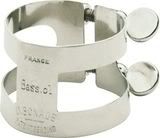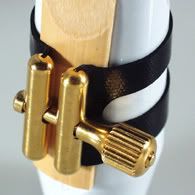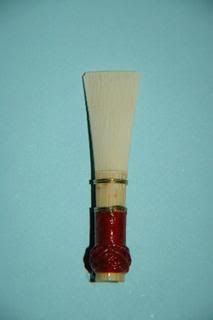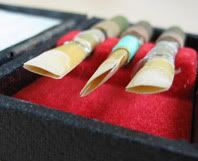Something that has always been important to me is music, whether playing it or listening to it it's something that is part of my life every day. So in an effort to expand the knowledge I already have and in a hope to bring a little bit more information to the random reader I have created Chopin Liszt, a Shopping List of music tid bits ranging from odd instruments to simple definitions. Have a question about something musical? Let me know and I'll try my best to get the answer for you!
Back to the Basics
So I started out with something interesting. A cool musical ornamentation(almost a decoration to a series of notes if you will) that isn't well known but has a cool little sound. While it is an interesting piece of knowledge I found myself having to backtrack and define term after term just to make it understandable to people who don't have to deal with these things on a normal basis. Thus I have come back to the beginning and decided instead to do something very basic this time in hopes that it will help me bring you even more interesting things next time and in more times to come!
Here are some basic things that are helpful to know (and you can impress your non-music friends with when you see them on things)
Basics:
The STAVE or the STAFF

Mostly referred to as the staff it is composed of five lines and four spaces that each represent a different note, or pitch, that must be played. As I am not teaching you to read music at this time but instead am just trying to familiarize you with the terminology I will leave the lines unnamed, but feel free to look into it more if you would like.
Bar Lines and Measures
The staff is then split up into separate sections with bar lines (vertical lines that cross all the horizontal staff lines at a right angle). These sections are called measures and their importance comes into play with the next term.
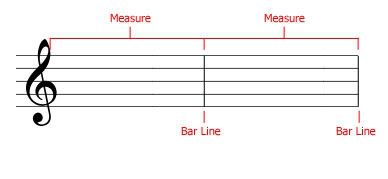
Time Signatures
One of the other basic building blocks of a piece os music before the notes are added is called the time signature. Time signatures are shown by one number on top of another at the beginning of a piece of music and right after the clef (which is explained next). They look something like this:
These numbers tell the musician how many beats(kind of like one tick on a metronome or clock) are in a measure so that they can keep the correct tempo and rhythm of a piece.
The top note will tell the reader how many beats are in each measure (defined above) and the bottom note will tell the reader which type of note (given as a fraction of the whole note) counts as one full beat
HUH?
For example, in 4/4 time (also called Common Time and notated with a C-just to confused you) we know by looking at the bottom number 4 that the quarter note counts as one full beat because it is 1/4 (note the 4) of a whole note. Then when we look at the top we know that four beats must happen in the measure before it is over.
Clefs
There are more than just these two but the main clefs that you will come in contact with (unless you play Viola) are the Bass Clef and the Treble Clef.


The first one show here is the Bass Clef (also referred to as the F-clef) and in general is used for lower instruments as well as the bottom half of the piano.
The second one shown is much more commonly seen around the non-music scene as a way to denote musicality in general. Often you will hear people refer to it as a note. It is not. This is the Treble Clef (or G-clef) and is generally used to higher instruments as well as the upper half of the piano.
Clefs are used to tell the musician the pitch of the notes written on the staff or stave. For example. The Bass Clef is also called the F-clef because the two little dots are on either side of the line that represents the note F. When an actual note is placed on that line the musician will play an F. From that starting point it is then possible to figure out what all the other notes are, but again I am not teaching you that right now.
Notes and Rests
Lastly are the notes and rests. A piece of music is made up completely of sound and silence and each are equally important. A note is used to tell the musician which pitch to play and how long to play it. Which pitch depends entirely where the note is place on the staff that we saw earlier (along with some other fun little things like accidentals and key signatures which I will go into later). The length, however, is shown by the note (or rest) itself.

This is a whole note. This long note will always be hollow and never have a stem. It counts for four beats in Common Time (4/4 time).

This is the whole rest-the counterpart to the whole note. It counts for four beats of silence in Common Time.

This is a half note. This note will also always be hollow but unlike the whole note it has a stem. It counts for two beats in Common Time. It will always be half the length of the whole note.

This is the half rest-the counterpart to the half note. It counts for two beats of silence in Common Time, or half the length of the whole rest.

This is the quarter note. This note has a stem like the half note but will always be filled in. It counts for one beat in Common Time. It will always be one quarter the length of the whole note.

This is a quarter rest-the counterpart to the quarter note. It counts for one beat of silence in Common Time, of one quarter length of the whole rest.

This is an eighth note. It counts of one half of a beat in Common Time. It is filled in and has a stem like the quarter note but it also has what is called a flag at the end of the stem. It will always be one eighth the length of the whole note.

This is an eighth rest-the counterpart to the eighth note. It counts for one half of a beat of silence in Common Time, or one eighth the length on the whole rest.
Key Signatures
Hahahaha-sorry. I'm not going to try and explain those right now but just know they are very important! In order to explain them to you I would need a whole other post-which I may indeed do sometime but for now I will leave them alone.
And that is all for now. I don't intend for this blog to be a learn-to-read-music site but I thought it would be nice to get a very basic how-to post out there for inquiring minds. Hope you enjoyed!
Very Punny
He often broke into song because he couldn't find the key.

